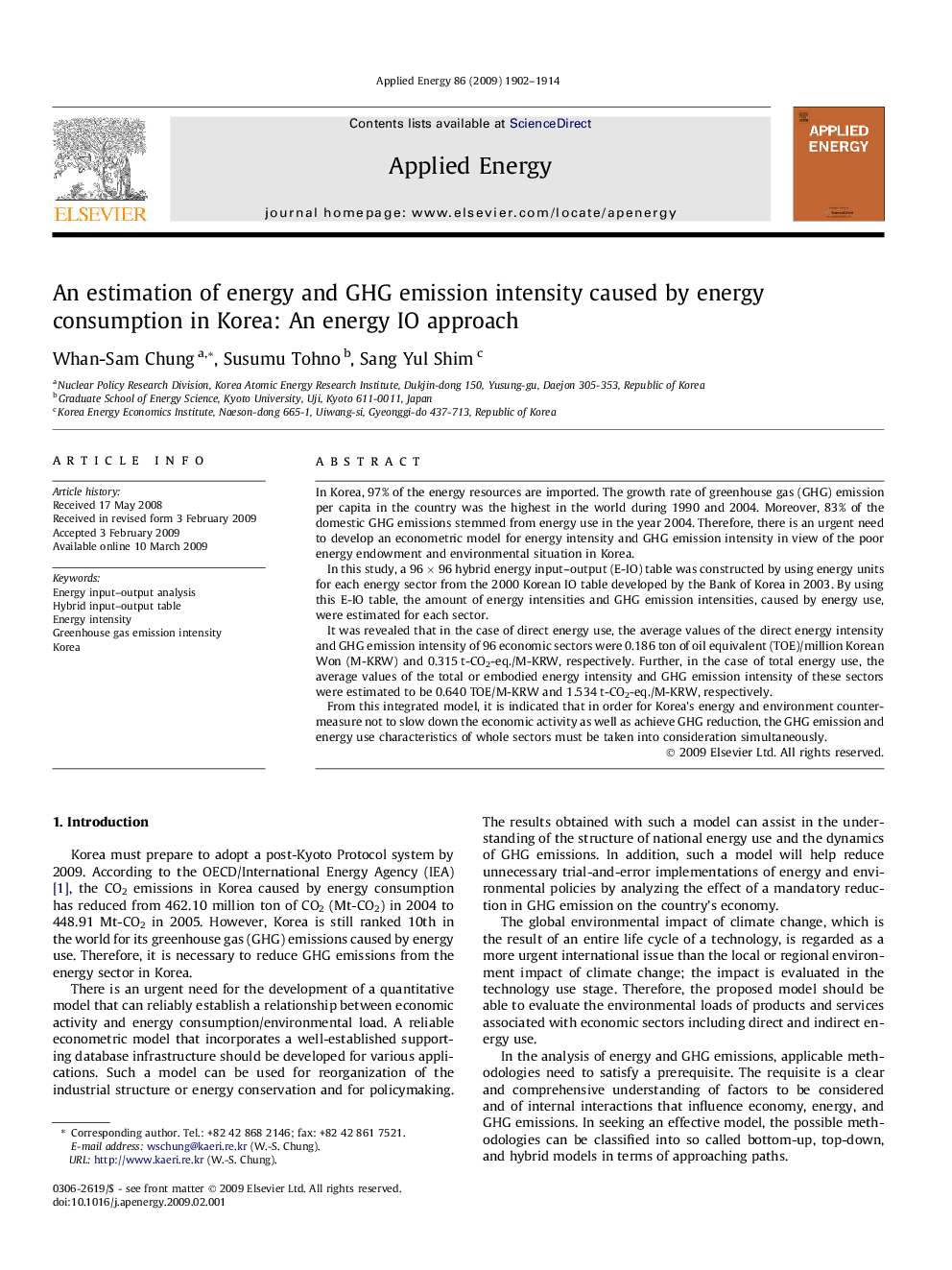| Article ID | Journal | Published Year | Pages | File Type |
|---|---|---|---|---|
| 244973 | Applied Energy | 2009 | 13 Pages |
In Korea, 97% of the energy resources are imported. The growth rate of greenhouse gas (GHG) emission per capita in the country was the highest in the world during 1990 and 2004. Moreover, 83% of the domestic GHG emissions stemmed from energy use in the year 2004. Therefore, there is an urgent need to develop an econometric model for energy intensity and GHG emission intensity in view of the poor energy endowment and environmental situation in Korea.In this study, a 96 × 96 hybrid energy input–output (E-IO) table was constructed by using energy units for each energy sector from the 2000 Korean IO table developed by the Bank of Korea in 2003. By using this E-IO table, the amount of energy intensities and GHG emission intensities, caused by energy use, were estimated for each sector.It was revealed that in the case of direct energy use, the average values of the direct energy intensity and GHG emission intensity of 96 economic sectors were 0.186 ton of oil equivalent (TOE)/million Korean Won (M-KRW) and 0.315 t-CO2-eq./M-KRW, respectively. Further, in the case of total energy use, the average values of the total or embodied energy intensity and GHG emission intensity of these sectors were estimated to be 0.640 TOE/M-KRW and 1.534 t-CO2-eq./M-KRW, respectively.From this integrated model, it is indicated that in order for Korea’s energy and environment countermeasure not to slow down the economic activity as well as achieve GHG reduction, the GHG emission and energy use characteristics of whole sectors must be taken into consideration simultaneously.
